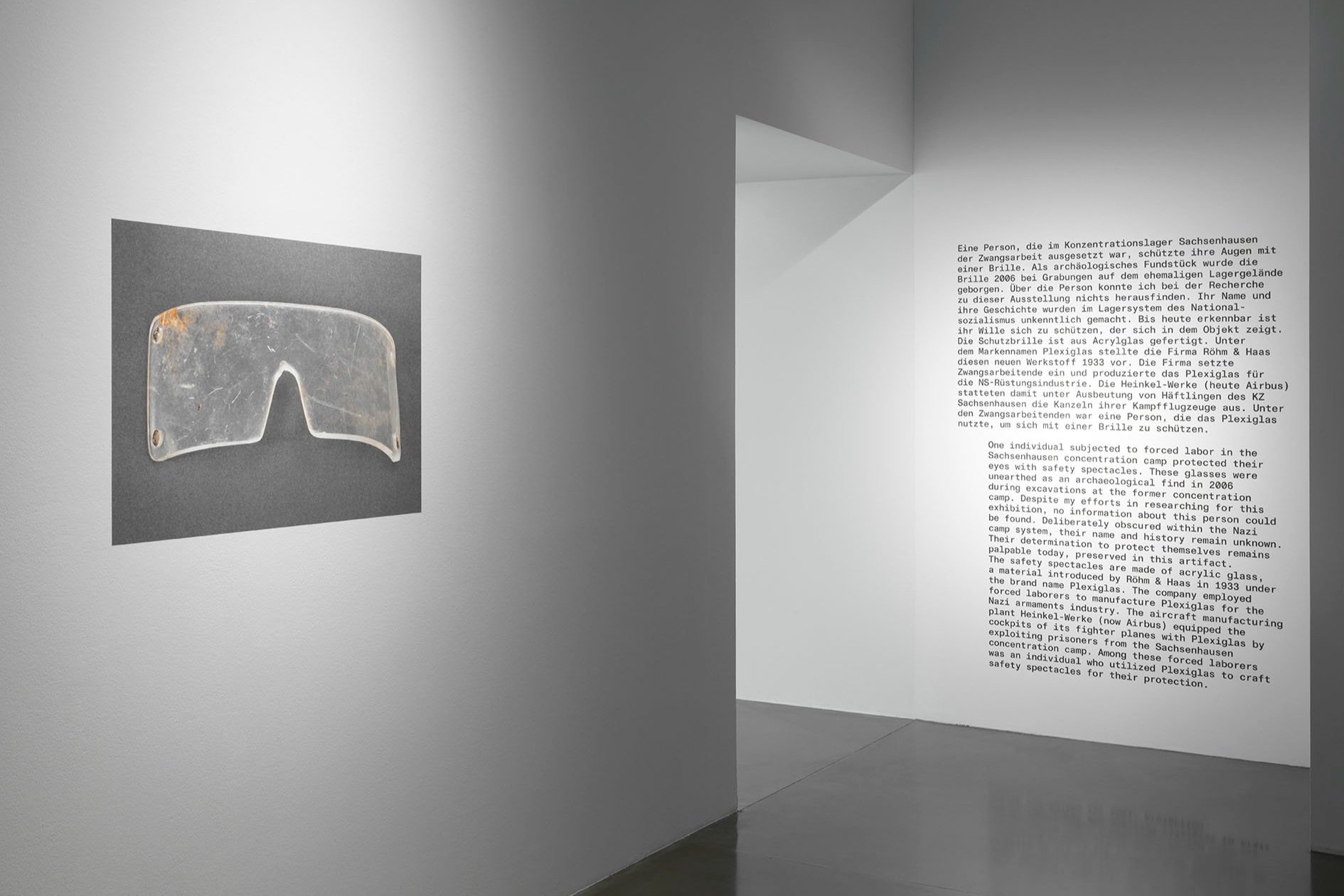24.3.24 – 14.7.24
Franz Wanner
Mind the Memory Gap
Maschinenhaus M1
In his first solo exhibition in Berlin, Franz Wanner (* 1975 in Bad Tölz) investigates present-day repercussions of the widespread exploitation through forced labour under National Socialism. Using photographs, texts, films and objects, the artist reveals social continuities from the Nazi era to today as well as gaps in Germany’s culture of remembrance.
Curator: Kathrin Becker
Discursive Programme
4.5., 14:00
Tour with Franz Wanner through the exhibition
In German
Free admission
Registration
30.5. 19:00
Kritische Vermittlung: Kunst und Erinnerungsarbeit
Franz Wanner in conversation with Nora Sternfeld (Art educator and curator, professor at HFBK Hamburg)
Building upon the exhibition Mind the Memory Gap, Franz Wanner and Nora Sternfeld ask: How can the realities of Nazi forced labour be visualized in a post-Nazi society? What hidden perspectives and enduring traditions require consideration?
In German
Free admission
3.7., 19:00
Kunstschutz und Praktiken der Ausbeutung: NS-Zwangsarbeit im Kunstbetrieb und in der Filmwirtschaft
Franz Wanner in conversation with Wolfgang Brauneis (Art historian and curator, Cologne and Nuremberg), Dr. Christine Glauning (Head of the Nazi Forced Labor Documentation Centre, Berlin), moderated by Vivien Buchhorn (Film historian and curator, Berlin)
Followed by a Filmscreening Zeit des Schweigens und der Dunkelheit (Dir: Nina Gladitz, FRG, 1982, 60 Min.) with an introduction by Vivien Buchhorn.
How were forced labourers exploited in the production of art and film during the Nazi era in Germany? How do the actors and institutions within the contemporary cultural industry respond to this issue? This discussion panel aims to further contextualise the questions raised in the exhibition.
In German
Free admission
5.7., 20:00
Franz Wanner. Mind the Memory Gap
Film screening followed by a conversation between Volker Pantenburg and Franz Wanner
Kino Arsenal, Potsdamer Straße 2, 10785 Berlin
In German
Info and tickets: arsenal-berlin.de
Wanner's art is based on meticulous research, which he moulds into narratives using images, videos and texts. (...) Filling the white space of the memory gap and revealing the traces of the past in the present also play a role here.
[Wanners Kunst basiert auf minutiösen Recherchen, die er mit Bildern, Videos und Texten zu Erzählungen formt. (...) Den weißen Raum der Gedächtnislücke zu füllen und die Spuren der Vergangenheit in der Gegenwart offenzulegen, spielt hier ebenso eine Rolle.]
Matthias Reichelt, nd, 5.4.24
Wanner demonstrates how normal forced labour was in everyday life in Germany at that time using footage taken by an amateur filmmaker. He only wanted to show a woman and child walking through Berlin-Lichtenberg in 1943, but forced labourers scurry through the picture in the background. A lot was known and a lot was seen, even back then. And for everyone who visits this exhibition, Plexiglas will never again be just that pretty transparent material.
[Wie normal Zwangsarbeit im damaligen Alltagsdeutschland war, demonstriert Wanner mit Aufnahmen eines Filmamateurs. Der wollte 1943 lediglich Frau und Kind beim Spaziergang durch Berlin-Lichtenberg zeigen, doch im Hintergrund huschen Zwangsarbeiterinnen durchs Bild. Man hat viel gewusst und viel gesehen, auch damals. Und Plexiglas wird für alle, die diese Ausstellung besuchen, nie mehr nur das so hübsch transparente Material sein.]
Tom Mustroph, taz – die tageszeitung, 18.4.24
Developed for the KINDL, in collaboration with the Harun Farocki Institute, Berlin, with the support of the Farocki Forum at the Department of Film Studies at the University of Zurich and the Erwin and Gisela von Steiner Foundation, the exhibition will be shown at Kunst Meran in 2025.






